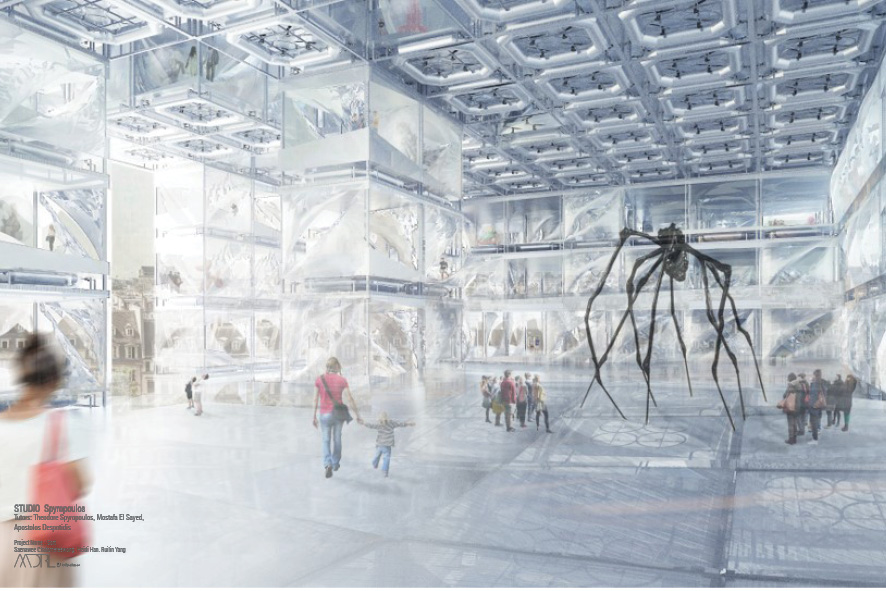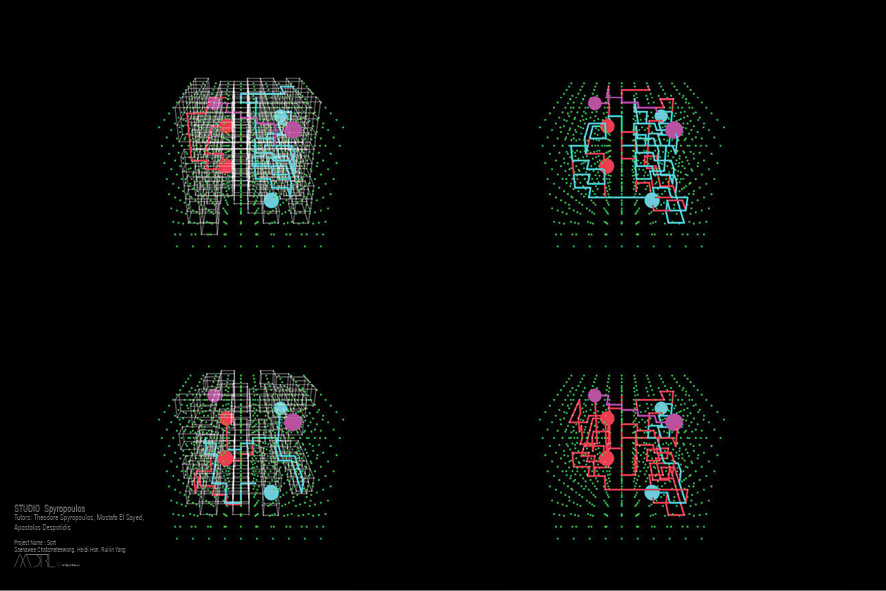Constructing agency 2016-2018
SORT
Studio Theodore Spyropoulos
Tutors Mostafa El-Sayed, Apostolos Despotidis
Team Saenawee Chatameteewong (Thailand), Heidi Han (USA), Ruilin Yang (China)
“What if architecture, or designed spatial environments in general, also ceased to be the static backdrop for action in the world, and started to respond and participate more actively in the play?”
Jane Burry, Mark Burry, The New Mathematics of Architecture, (London: Thames and Hudson Ltd, 2012), 211.
“over time the space and the occupants would develop a familiarity with the interactive environment – a form of self-learning leading to human benefit.”
Jane Burry, Mark Burry, The New Mathematics of Architecture, (London: Thames and Hudson Ltd, 2012), 245.
SORT is a research project that speculates the future of culture through the investigation of a ‘building-as-machine’ model – a type of ‘plug-and-play’ model. It explores what the future could mean if our environments could allow for the participation of different multi-influential agents. It questions if a building, its contents, and its occupants could all be active participants – having the ability to navigate through a dynamic infrastructure of decision making and organization.
The project challenges the architecture that we know today : one that is mostly a passive entity, one that is conceived of, materialized, and then occupied. We challenge it with a proposal where a building becomes a sorting cultural machine and a dynamic warehouse of multiple agents – one that is constantly changing and responding.
Methodology:
“Instead of computers acting as tools for a certain task, we embedded computational intelligence as a co-author of the system”
John Frazer, An Evolutionary Architecture: Themes VII, (London: Architectural Association Publications, 1995), 18.
To experiment with this approach to architecture, we investigate the agency of three main elements: the agency of a building, the agency of the contents of a building, and the agency of the occupants or visitors of the building. Inspired by the radical Centre Pompidou competition from the 1970s that sought to engage in a conversation between culture and the public, we propose a new way of experiencing the future of culture through our cultural machine.
In our proposal for a machine that organizes our world, we envision that intelligent systems of the agents make decisions, and influence the outcome of others. Our building transforms, our objects sort, and our visitors can engage in a dynamic environment where architecture becomes infrastructure. We explore this new model for architecture with computational curational sorting and spatial reconfiguration and transformation through our unit prototype.
Scenario + Testing:
Utilizing the Centre Pompidou as our test case for our ‘building-as-machine’ model, we aim to create the future of culture through discovery and dynamic choreography. We test how to respond and converse with our environments through a logistical choreography, where the demand of visitors, the demand of objects and spaces becomes part of a spectacle to be experienced. We explore scenarios where the active agency of the multi-influential agents can change and transform an experience through different timelines. By re-examining the conversation between people, cultural artifacts, and context (building), we aim to break down the hierarchical and linear nature of communication and conversation in architecture. We propose, instead, a conversation where the relationship is non-hierarchical, and a dialogue of symbiosis can be achieved between man and machine.

















